Say Hello To... The SkyCatcher-Catcher?
Security was tight around the green-tarped aircraft, with rumors
abounding as to what was beneath. Was it an update on an existing
Cirrus? Was it something new? Cirrus employees wearing T-shirts
that loudly proclaimed "Security" had their arms crossed as they
surveyed the crowd.
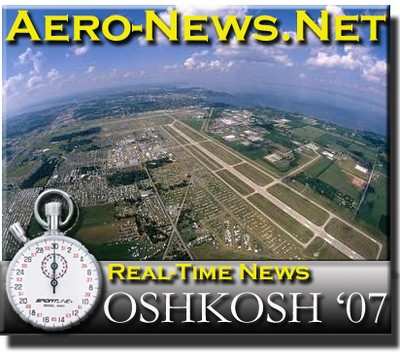
So when the tarp was pulled back -- following opening comments
from Chairman and CEO Alan Klapmeier about the next step for Cirrus
in continuing to make aviation more affordable, available, and fun
for new pilots -- its bright yellow and white SR Sport (SRS) LSA
shone brightly in the blue sky.
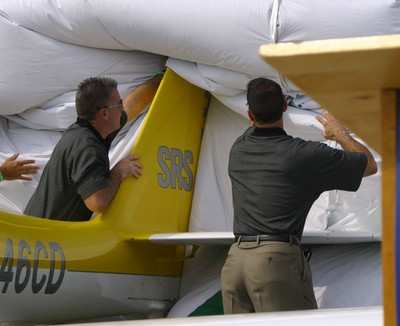
The SRS is based on the European Fk Polaris, which is lighter,
faster, and not in alignment with the FAA's LSA specs - yet. After
the craft's "Cirrus-ization," as Alan put it, it will confirm to
LSA standards -- which include, ironically, slowing down the
lightning quick European version.
Declared Klapmeier, "This is a great start and it's a great
plane. It looks good and is a lot of fun to fly."
"It's a great trainer," he added, "and will be fun to fly even
if you fly another craft."
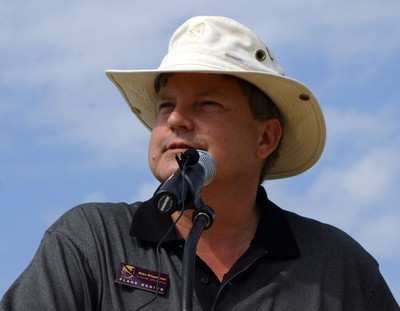
Manufacturer Fk Lightplanes has a 17-year history in light plane
manufacturing. With operations in Poland, the Klapmeiers foresee
the manufacture of their plane remaining in Poland, with assembly
in the US -- a model followed by other vendors of foreign-sourced
planes.
For the past four years, Cirrus evaluated two-seat planes from
European manufacturers -- the center of development for this type
of aircraft.
"The relationship we have developed with Fk Lightplanes allows
us to rapidly offer cost efficient, sporty, entry-level aircraft
for sport and recreation enthusiasts and basic training," said
Klapmeier. "And our worldwide service and support infrastructure
will make the SRS even more appealing."
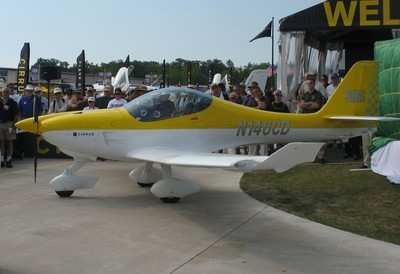
Cirrus has more than 170 Cirrus Authorized Service Centers
worldwide; 142 domestic and 31 in 14 international countries.
Said Fk Lightplanes President Peter Funk, "We are excited to be
working with Cirrus on this project ... and proud to be associated
with the company."
The goal is to have the first planes off the production line in
about a year. Although unable to offer specifics about the final
price of its newest family member, brothers Dale and Alan Klapmeier
anticipate it will be competitively priced, in the $100,000
range.
A composite construction low wing craft, the plane will include
a Cirrus Airframe Parachute System sourced from BRS (the Fk14
already has this feature as standard) and will use a Rotax 912
engine -- allowing Cirrus to continue offering single-lever power
control throughout its entire line (no mixture knob.) Preliminary
specs also include electric flaps, removable wings, a large baggage
compartment and one-piece cabin, a fuel tank system outside of the
crumple zone, low stall speed, height of 6.9 feet, length of 18.7
feet, a wingspan of 29.8 feet, and interior width if 45 inches.
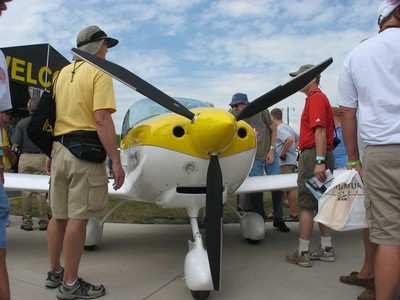
In terms of performance, it will have a fuel capacity of 18.6
gallons, a fuel burn of 3.8 gallons per hour, take 100 LL fuel, and
have a useful load of a minimum of 400 pounds.
One of the changes will include adding a step to the plane for
easy access (and, Alan noted only somewhat jokingly, adding drag to
help slow the plane down to LSA speeds), and moving from finger
brakes to toe brakes, which American pilots see as more highly
desirable.
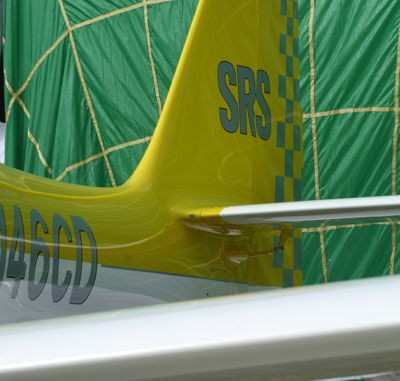
Alan Klapmeier spoke about significant issues facing aviation,
particularly bringing more pilots to the arena, and how the SRS and
all LSAs -- including Cessna's newly-announced SkyCatcher entrant,
are all very good for the industry in expanding the market.
"For years we have talked about how we, as an industry, needed
to introduce more people to flying," said Alan. "We believe Cirrus
has been quite successful at opening the doors of aviation through
our current SR product line. The SRS is yet another example of how
seriously we take this responsibility, providing a high customer
value product that is easier to fly, more comfortable, loaded with
safety features - all at an extremely affordable cost."
Added Dale, "We are better off in this market to have lots of
very healthy companies with very good designs out there... We want
to bring back fun to flying. We want to bring kids back to the
airports (watching planes)."
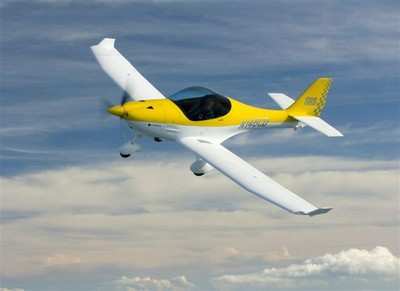
To that end, Cirrus also announced it will donate its first
production SRS, arriving in about a year, to EAA for its Young
Eagles Program.
EAA President and AirVenture Chairman Tom Poberezny, in his
comments thanking Cirrus for its donation, innovation, and support
of kids, called the company the "keeper of the flame." What better
endorsement?
 Aero-News: Quote of the Day (04.28.25)
Aero-News: Quote of the Day (04.28.25) ANN's Daily Aero-Term (04.28.25): Decision Altitude (DA)
ANN's Daily Aero-Term (04.28.25): Decision Altitude (DA) ANN's Daily Aero-Linx (04.28.25)
ANN's Daily Aero-Linx (04.28.25) Airborne-Flight Training 04.24.25: GA Refocused, Seminole/Epic, WestJet v TFWP
Airborne-Flight Training 04.24.25: GA Refocused, Seminole/Epic, WestJet v TFWP Aero-News: Quote of the Day (04.29.25)
Aero-News: Quote of the Day (04.29.25)









